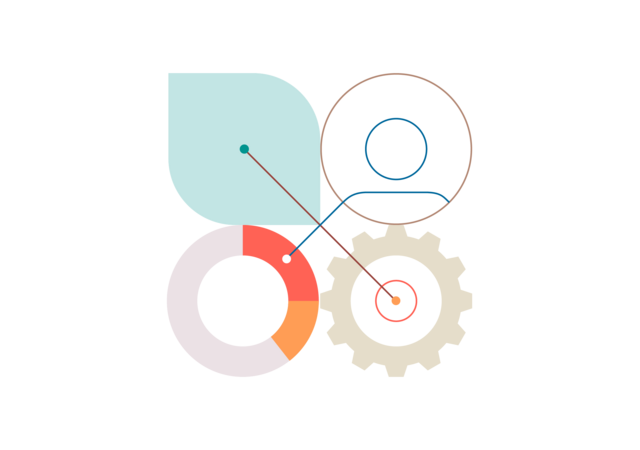Corporate reporting of ESG data is finally becoming common practice. According to the Governance and Accountability Institute, 90% of S&P 500 companies now publicly report their performance on ESG standards.
While ESG reporting involves disclosing data from an organization’s operations in all three important environmental, social and corporate governance areas, we will focus on climate issues relating to corporate environmental performance.
Our historical impact on the environment
Human impact on the physical environment is becoming increasingly evident. Overpopulation, pollution, burning of fossil fuels and deforestation have all contributed to climate change, affecting worldwide ecosystems that we, and all species, depend on. The scientific community continues to find more evidence of how human activity has directly or indirectly contributed to the extinction of thousands of species in the last two centuries, compared to the millions of years over which extinctions naturally occur. As humanity grows and expands its footprint through the 21st century, we are changing the world in unprecedented ways.
Our environmentally sustainable future
Corporate environmental sustainability has gained momentum and grown in popularity in recent years. The World Commission on Environment and Development (WCED), a United Nations initiative, defined the concept of “sustainable development” in 1987. Sustainable development represents actions that “meet the needs of present generations without compromising the needs of future generations.” Yet it took until December 2015, with the Paris Agreement on climate change, to assemble a cooperative, worldwide effort toward the reduction of greenhouse gases (GHGs) that contribute to that issue. The legally binding international treaty on climate change was adopted by 196 Parties at COP 21 in Paris.
"It stands as a landmark because, “for the first time, a binding agreement brought all nations into a common cause to undertake ambitious efforts to combat climate change and adapt to its effects.”
Since then, we have seen increased momentum for sustainable initiatives and practices among governments, organizations and corporations. The Science Based Targets initiative (SBTi), an outgrowth of the Paris Agreement, is a partnership between the Carbon Disclosure Project (CDP), the UN Global Compact (UNGC), the World Resources Institute (WRI) and the World Wildlife Fund (WWF). The initiative promotes corporate ambition for climate action. It mobilizes companies to set greenhouse gas (GHG) emission reduction targets consistent with the level of decarbonization required by science to limit warming to less than 1.5ºC/ 2°C above pre-industrial period temperatures.
"To prevent the catastrophic impacts of climate change, GHG emissions must be halved by 2030, and drop to net-zero by 2050."
Reducing carbon emissions
The scientific community has warned for years that failure to reduce our global greenhouse gas (GHG) emissions will lead to famine, flooding, drought, the downfall of financial markets and other crises. Businesses are therefore reducing their carbon footprint and environmental impact by monitoring their carbon emissions across three different scopes
Scope 1: Direct emissions
These are emissions from a company released into the atmosphere as a result of their activities include:
- Stationary combustion (e.g., heating sources)
- Mobile combustion from burning fuels (e.g., company cars, vans, trucks)
- Fugitive emissions — leaks of GHG (e.g., A/C units, refrigeration)
- Process emissions — released from industrial activities and manufacturing
Scope 2: Indirect emissions — owned
These are emissions from purchased energy sources for your organisation’s use, such as:
- Electricity
- Steam
- Heat
- Cooling systems
Scope 3: Indirect emissions — not owned
These are all the emissions not included in Scope 2 that are a result of a company’s operations, such as:
- Business travel (e.g., railway, air travel, public or private transport)
- Waste sent to landfill and water treatments — waste disposal emits various GHGs such as CH4 (methane) and N2O (nitrous oxide), which cause more significant damage than CO2 (carbon dioxide) emissions
- Purchased goods and services – emissions caused by their production
- Supply chain distribution – emissions from land, air and sea transportation
Implementing environmental management frameworks to calculate and reduce environmental impact throughout the value chain will lead to sizable benefits for society and the environment. As more companies take action and operate in a consistently sustainable manner, we may prevent further climate catastrophes from happening in the near future. Humanity is dependent on the sustainable activities' organizations implement.
Promoting transformational change
Now is the time for businesses to transition to sustainable practices and deploy corporate influence for positive change in the value chain, the market, their policies and their culture. Consumer interest in sustainability is growing, and we are seeing evidence of mass behavioral change, like the meteoric rise of electric vehicle sales. Consumers aren’t afraid to call out and scrutinize companies on their environmental pollution, which we saw in response to businesses that failed to reduce their plastic consumption.
Embracing sustainability initiatives can help you promote your business and engage with your customers. Sharing objectives and results with your stakeholders create value for your business and encourage further sustainability initiatives amongst customers and competitors.
“When asked, consumers say they are highly motivated to be sustainable and prefer to buy from companies that give back to society. Consumers also overwhelmingly report that they want to purchase green products, reduce their energy usage, buy second-hand, pay for fair trade and donate to charities. Surveys suggest that they have a clear sense of personal responsibility, want to make the world a better place, and when asked, an increasing majority says they are willing to pay a premium for sustainability.”
Some companies are going even further and positively shaping the economy through green initiatives. They are identifying opportunities and communicating their objectives, encouraging governments to take action by removing barriers and crafting sustainable frameworks. For example, Ford and Nike are two of many companies that manufacture their product from recycled materials. Additionally, in 2020, over 330 enterprises, including Adobe, Microsoft and VISA, called on a “bipartisan group of federal lawmakers to build back a better economy by infusing resilient, long-term climate solutions into future economic recovery plans.” This new type of business leadership is helping the world transition toward a sustainable economy.
At UL, we work with you to set goals and develop the right strategies to help you take action. With UL’s 360 Sustainability Essentials software, you can learn how to implement sustainability frameworks for your business and take part in this worldwide effort. Gain the insight you need to dynamize your business operations, share your goals, improve your business partnerships and gain support from the stakeholders you value.
Social in ESG Reporting
In the second installment of this series, we will examine the social component of environmental, social and governance (ESG) reporting.
Governance in ESG Reporting
In the last of this three-part series, we analyze the governance component of Environmental, Social and Governance (ESG) reporting.
360 Sustainability Essentials software
Rated #1 by Verdantix, our award-winning investment-grade sustainability data management system is available as an out-of-the-box solution. 360 Sustainability Essentials includes everything you need to report to leading frameworks while allowing you to focus on performance improvements.
Get in touch
Have questions, need specifics? Let's get this conversation started.






